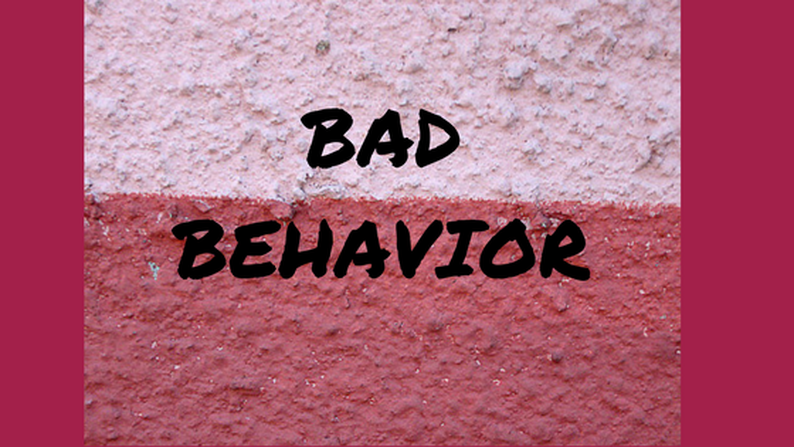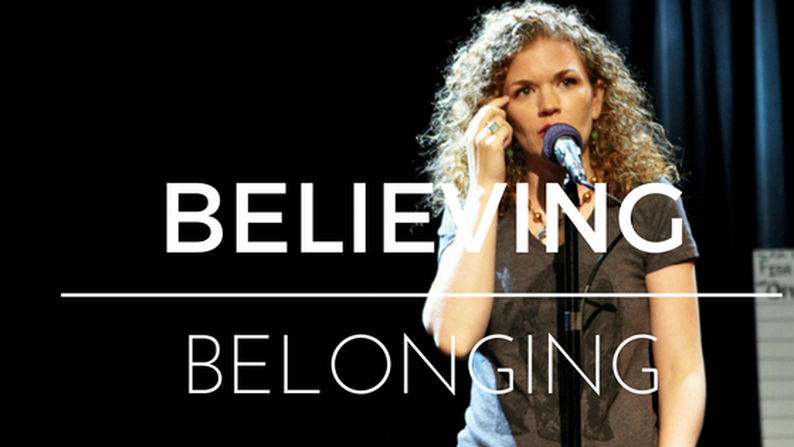So, jump ahead a few weeks. It’s a Friday morning. The paint had been purchased. The appliances were all moved to the center of the room and the walls were prepped. It was going to be an all-day project. It’s wasn’t a big kitchen, but with cabinets, sinks and pipes to paint around it would take the better part of a day to finish. Plus, these are retired volunteers. No one is punching a clock.
I was helpful. I’m not a great painter (although it is amazing how much better I’ve become the longer I have served congregations). I rolled paint. We talked. When doing volunteer projects, you get to learn about other people; who they are, and what’s important to them.
It ended up being a steady day of painting. I must say, the kitchen looked great. It’s amazing what a new coat of paint can do for a room.
Proud of our accomplishments, we cleaned, packed up, and headed home. It was dinner time.
I don’t remember why I went back to the church. Maybe I forgot something. Maybe I was driving by and saw someone in the building. Or maybe someone had called me to let me know what was happening in the kitchen. Whatever the reason, when I went back, there she was.
Jacqueline was an active member. She didn’t serve on any committees, but she volunteered and sung in the choir. She was good friends with the former pastor and was always suspect of me. She had two teenage children. And there, standing in the middle of a freshly painted kitchen were the three of them. In my naiveté I assumed they were there to take in the amazing work of the trustees and to celebrate, finally, the completion of the project. I was wrong. While it’s true she was there to see what had been done, she was not excited.
What she said to me, in a tone of exasperation, was, “This is a terrible choice of color. I’m going out to the store and purchasing a different color.” In that moment, it hadn’t occurred to me she was serious. I would come to learn how serious she really was. I decided to give her the process litany:
- This is a decision of the trustees
- They met several times and discussed whether or not to paint the kitchen.
- They met several times and discussed a choice of color.
- They voted.
- They painted.
- The end.
While I don’t recall verbatim the conversation, I’m pretty sure at some point in the litany I said something like, “If you don’t like the color, I suggest you talk to the chair of the trustees and take it up with them.”
She said, “I’m not going to talk to anyone. I’m going to pick out different paint.”
With the knowledge on my side of how satisfied the trustees were with their accomplishment, I responded by saying, “Who’s going to paint?”
Without hesitation she said, “The three of us are.” And just like that, the three of them left.
I thought I had some time to figure out what to do next. At least twelve hours. It was 7 pm. By the time they purchased the paint and were back, it would be closer to 8 pm. It had taken us all day to paint (granted, they were not a fast bunch) so even if they got back by 8 pm, only a fool would start that late. It would be easier to start fresh in the morning, or so I thought. I ultimately concluded that she was bluffing. I would be wrong again.
Just in case I was wrong about her motivation, I arrived early the next morning to meet her and the two teenagers at the church. As I entered the church, there was no signs of the three of them. No ladders and no cans of paint. No drop cloths. Only the sight of the kitchen with a different color of paint. She hadn’t been bluffing at all. They had been there all night repainting the kitchen. It was the color Jacqueline wanted.
Nowhere in my seminary education or training had I been given an inkling that someday I would be dealing with this. How am I going to respond to this? What would I do? I was completely lost. What in the world was going on here?
The importance of taking time for input.
What do trustees fear the most? Congregational input. Anyone who has ever attempted to replace carpeting in a worship space knows firsthand when you open the conversation up to the congregation for input, chaos may await you. But is that really true?
The biggest enemy to a board of trustees is not the congregation but a sense of urgency. It’s amazing how a board of trustees can take months to discuss and debate the merits of a capital improvement, but are often unwilling to afford congregational members the same opportunity. When this happens, trustees and congregations begin to struggle. It becomes a pattern. Trustees fear congregational conflict so they don’t consult with the congregation about decisions they are trying to make. Congregations become frustrated with trustees because they are never consulted on decisions. So congregations become critical of decisions made by the trustees. In reaction to the criticism, trustees react by being defensive which makes them less motivated to consult with the congregation in the future and on and on it goes.
In my experience, when congregations are invited to give feedback on a particular project, the process is, in general, positive. If this has not been your experience, you can comment below. The problem is really the fear of what others might do.
The importance of knowing the three “C’s” of an effective process.
I once heard Richard Blackburn, the guru of congregational conflict and mediation, describe the three C’s of making a decision: communication, communication, communication. It is the key to any decision making process. When there can be good communication and time to address problems as they arise, the best possible decision will be made. Decisions that are rushed, done in secret, or exclude specific people or groups are recipes for disaster. Open communication in these situations is offend viewed as a threat to the process.
The importance of protecting the process and asking good questions.
Problems arise, not in developing the process, but in the implementation. It’s common to hear leaders say, “There hasn’t been much resistance to this new idea being proposed. That’s unusual.” I always remind them it’s because no action steps have been taken yet. When concrete steps are taken, and the process moves forward, anxiety and reactivity go up. When it does, it’s critical for congregational leaders to not defend, not attack and not withdraw.
Clergy in partnership with congregational leaders can be helpful by protecting the process; making sure agreed upon steps are being followed. When anxiety rises, which is inevitable, the temptation is to side step the process in order to side step anxiety. When a leader is confident in the process and is able to articulate their best thinking about the importance of sticking with the process there is a better chance the anxiety will decrease.
Another way for clergy and congregational leaders to address rising anxiety is to ask good questions. Questions that engage thinking can make all the difference. Questions like:
- How have decisions been made in the past? What was the process? Who makes the decision?
- When has this congregation made a good decision? What was the process?
- How does your family make decisions? Who makes them? What’s the process?
- What is the greatest fear about this project? How do we get factual about this fear? How likely is the fear to come true?
- What are leaders responsible for in the process; not responsible for?
- When it comes to communication, what is leadership responsible for? What are congregational members responsible for?
- What factors might push this process off course? How do we get ourselves back on track when we get off course?
It’s important to remember that each person is responsible for addressing their own level of anxiety.
Before you decide to say to someone, “You need to calm down and deal with your own anxiety,” don’t do it! It never goes well. Trust me, I know from experience. However, it is true that each person is responsible for their own reactivity. We cannot control each other’s response to anxiety. We can only control the self. The best we can do is adjust and modify the anxiety we share with others. It is more than just being a calm, non-anxious presence. It is being a thinking presence. Calming oneself is helpful in order to think clearly, but it is the thinking that modifies the distribution of anxiety from one person to another.
This, then, is the heart of what we call “bad behavior”. As much as we would like to think that bad behavior is the result of evil intentions of others or calculated attempts to infuriate our sense of well-being, the truth is bad behavior is a symptom of a larger problem within the relationship system.
It’s important to resist the need to over-function.
Dr. Murray Bowen observed that when an individual picks up the anxiety of a group, there is a tendency for some to take on more responsibility. It’s difficult to be critical of someone who is a hard worker, willing to take on more responsibility. Bowen observed, however, that this effort is motivated by a need to reduce their own level of anxiety. Doing too much is a reaction to rising tensions in the relationship system. Bowen, in his theory of human behavior, described this process as over-functioning and under-functioning.
Before becoming critical of controlling people in your congregation, remember we all operate out of a relationship system. Those who over-functioning do so because the system demands it. In other words, when anxiety goes up, those who are vulnerable to taking on the anxiety increase or decrease their functioning. When functioning in the system decreases, others pick up the slack and do more. When someone increases their functioning in response to anxiety, others respond by decreasing. It takes at least two to tango. You can’t have one without the other.
A good coach works with the person who is most motivated in the relationship system. It is usually the one who over-functions. It’s important to appreciate the motivation and weight this person carries within the system. They often feel personally responsible for the well-being of others. Telling them to be less responsible sounds cold and callous. It’s only when one is able to see their part in the process, the role they play in perpetuating patterns and anxiety, that the system can change. When one is able to tie their over-functioning and over-investment to the decreased functioning of others in the relationship system, there is a realization that the effort to help others is having the opposite effect. The extent of the shift will be commensurate with the leader’s capacity to tolerate increasing levels of anxiety and their ability to respond with more thinking and less reactivity. At the core of this effort is a belief that others are doing the best they can with what they have and that we can all do better.
I invite you to share your thoughts below in the comment section. How do you think about these problems within congregations? What role can a leader play?




 RSS Feed
RSS Feed